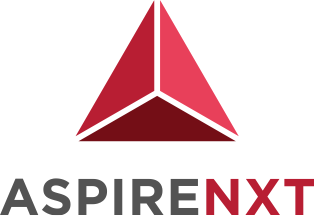Introduction to Software as a Service (SaaS) and its importance in business technology

The importance of SAAS in business technology
SaaS is Software that is deployed in cloud infrastructure and will be available over the internet. With SaaS, businesses are not required to install and maintain the Software since it is easily accessible over the internet, which makes the system highly flexible and affordable for any budget. SaaS can be an ideal solution for any size of business, including large enterprises, small businesses or an individual.
This SaaS application is commonly called web-based Software, on-demand Software, or hosted Software, and it can be deployed in three different models:
Private Cloud
Usually Provisioned for exclusive use by a single organization comprising multiple customers. The cloud Infrastructure may be owned, managed, and operated by the organization, a third party or a combination. It may also exist on or off premises.
Public Cloud
A cloud Software that is built on infrastructure that is provisioned to be used by the public. The cloud infrastructure may be owned, managed, and operated by a business, academic or government organization or some combination. It is available on the premises of the cloud provider.
Hybrid Cloud
The Cloud software is primarily built on one type of infrastructure with the ability to switch to another in times of high demand.
How can SaaS benefit your business?
Software as a Service (SaaS) gives a lot of benefits to your business. This SaaS model usually combines all the functional tools with high-quality service to provide an excellent experience to the business. There are some of the benefits of SaaS that you could leverage in your business:
Cost Saving
SaaS model operates on a Pay-as-you-go structure, which allows a business to pay the subscription fees over time and based on usage. This makes SaaS products usually more affordable and feasible for business. This subscription model has helped the business to have less financial risk, especially for small and start-up businesses.
The business will also be able to reduce the cost of installation, configuration, and maintenance as it will be managed by the provider. For the business that does not have enough funds or expertise to build as well as maintain the application, they will be able to rely on professionals and save money in the process.
By using a multi-tenant environment of SaaS products allows the tenant to share the cost of maintenance and updates. It also allows large enterprises to benefit from SaaS by renting it temporarily if they require it for a short period.
Free Trials
Provider usually allows businesses to participate in free trials for SaaS business products. It can be a seven, fourteen- or thirty-day period for the business to test a program out for free and identify their business needs. Trying a product before investing helps the business to minimize its risks and allows them to maximize the return on its investment.
Cash Flow
SaaS models eventually will be able to help to increase the cash flow for both the provider and the businesses. By being able to pay a limited amount per period for SaaS subscriptions instead of spending a big amount of capital at one time, it helps the business to have more cash flow. It allows them to make short-term decisions and ensure long-term financial success.
SaaS structures can provide the opportunity for businesses to recurrent revenue and predict their revenue stream. It provides the business with some sort of assurance that they have enough profits to cover the business expenses.
Flexibility
With SaaS model provides significant flexibility for the business. It allows them to only pay for the product when they are using it. As we know, the business may have diverse and custom payment plans, and usually, they come with different tiers for clients with different financial backgrounds. With SaaS, a business can sign up and cancel subscriptions easily and decide the usage based on their goals. It provides them with the option of a downgrade and upgrading the model based on their business needs. This shows that the SaaS model is highly flexible for business.
Convenience
Since the deployment is built over the internet, the business can access up-to-date, functional applications by simply signing into the system, which makes it very convenient for them. The system is instant, easy to access and saves time, efforts as well as doesn’t require the business to have an IT expert to manage this.
Any employee can adopt this software program and will be able to work on the task immediately. By having SaaS vendors solve any technical issues, manage technical tasks and ensure data security, the business can focus and spend their valuable time working on priorities.
Engagement
With SaaS products, the business will be able to increase its customer engagement rate and improve its revenue levels. With SaaS, it allows real-time collaboration and revisions as well as allowing the employee to use the system remotely and independently.
Continuous Updates
A software provider usually creates new versions of the products every six to twelve months to ensure that the Software remains useful to the current business needs. It is as simple as a click of a button and allows the business to enjoy new features of the Software without any shutdown in operations.
Data Security
A SaaS vendor team are an expert in developing Software, and it is their main goal to keep the business data secured. It allows the business to store and backup their data on the internet servers and ensures that they are able to access the data from different devices at any time. The advance in cloud technology will provide high-quality data security solutions to clients, including multi-factor authentication and anti-phishing programs.




